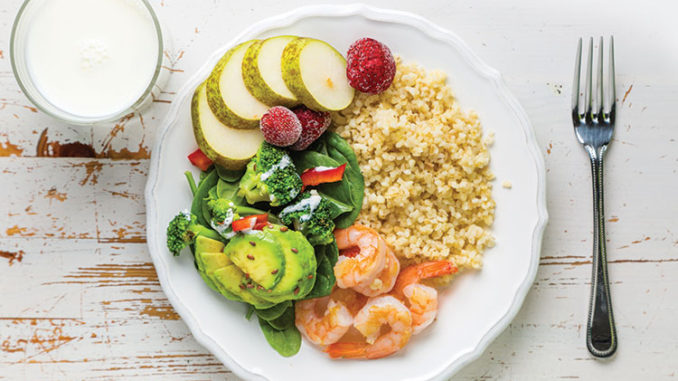
Don’t Skip Meals
Skipping meals can lead to weight gain and once hunger catches up with us, it causes us to overload on huge portions at the next meal. For most people, the best plan is to eat three balanced meals spaced throughout the day and a healthy snack.
Learn to Approximate
When you’re unable to accurately measure the serving of your meal, it’s good to know a few helpful tips in approximating serving sizes. The standard serving size for lean meat is the size of a deck of cards. This may seem small, but when partnered with other correct portion sizes, you’ll find your stomach to be satisfied!
Measure Your Food
We buy food based on the fact that it has fewer calories than the alternative. This can be a good practice, however, pay attention to the serving size. When you’re making a meal or packing a snack, grab a measuring cup or food scale and measure the suggested serving.
Size Up Your Dinner Plate
Using a smaller dinner plate, imagine a line right down the middle and fill 50% of it with vegetables. Divide the other half of your plate again, forming two 25% sections. In the first 25% section, add your protein like grilled chicken, beans, soy, eggs, or fish. Fill the final 25% with a healthy starch such as brown rice or a baked potato.
Go For Half
Sometimes we find ourselves in a situation—such as dining out—where the extra-large portion sizes are out of our control. Order the healthy side and ask for half of your meal to be put in a to-go box. By keeping half of the meal off of your plate, you are setting yourself up for success!
Water
Studies continue to prove the importance of water, and people who regularly drink water consume far less calories throughout the day! Water also helps with digestion, skin health, and fatigue. Drink a full glass of water 30 minutes before a meal to help you feel full faster.




